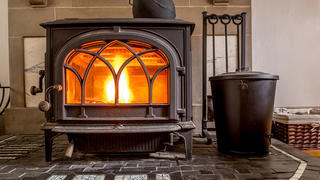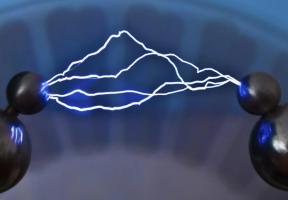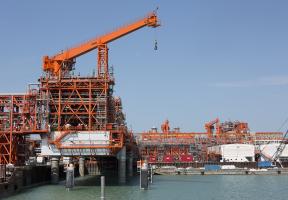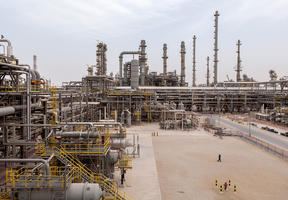Wood-Fired Heating Practical Information
5 min read
For many centuries, burning wood was the main source of for mankind. Today, households are once again turning to wood, so much so that France is now the leading market in Europe for wood-fired heating systems, ahead of Norway, Germany and Italy. But wood-heating technologies have changed a lot in the last decade. Now a thing of the past, open fires have been replaced by increasingly sophisticated stoves and furnaces.

© THINKSTOCK - People in France are once again turning to wood for backup heating.
Wood-fired heating is generally used in single-family homes and, in 80% of cases, in addition to another heating system, running on , gas or oil. In Brittany, France, one third of households, or 450,000 out of 1.5 million, are equipped with wood-fired heating systems.
The estimated number of households in France fitted with such systems has risen from 7 million in 2011 to 8 million in 2016. Public authorities have set the target at 9 million in 2020. Remarkably, the jump from 7 to 9 million households in ten years will be achieved without increasing the amount of wood consumed for heating purposes, which will remain stable at 7.4 million metric (Mtoe). Such a feat will be made possible through more efficient use of equipment and , to produce more heat using less wood.
Although very cozy, a roaring open fire is not technically considered to be a heating system; it is very poor in terms of (10%) and generates high levels of pollutant emissions, such as and fine particles. On the other hand, according to the French Renewable Energies Syndicate (SER), modern heating systems have tripled energy efficiency levels and divided both carbon monoxide emissions by three, and the release of fine particles by 30, since 2000, the year in which the "flamme verte" label (green flame) was introduced (see box: "Wood-Fired Heating and Fine Particle Emissions").
Heating Systems
Generally speaking, heating systems can be split into the following categories:
- Inserts, which are fitted into an existing fireplace.
- Closed-combustion fireplaces, or stoves installed against a wall if there is no existing fireplace.
- Stoves that are installed, ideally, in the middle of a large, first-floor room.
They are generally fitted with a glass door that allows users to see the flames, retaining the charm of a traditional fireplace. They provide heating for the room in which they are installed and can also spread warmth to surrounding rooms using appropriate ducting or hydronic stoves.
Another type of system, larger than a stove, is a furnace. Often installed in a basement or garage, a furnace provides central heating and hot water for the household. The most sophisticated systems can be automatically refueled with wood pellets or briquettes.
Domestic Fuel
Energy efficiency can also be improved through implementing standards for fuel, in particular by guaranteeing suitably low moisture content levels. To ensure a stove operates optimally, the fuel's moisture content must be below 20%. For wood to be efficient, it requires almost two years to dry sufficiently. Using wood with a 40% moisture content leads to a 25% reduction in energy efficiency.
There are four types of wood fuel:
- Classic logs, from forests or hedgerows, cut from trees unsuitable for other uses.
- Briquettes, which look like logs, but are reconstituted by compressing wood waste and shavings.
- Pellets, which are also made from compressed wood offcuts from sawmills and furniture production, but are much smaller fragments. They are used in specifically designed stoves.
- Chips, which are made from branches shredded directly in the forest when trees are cut down. They are mainly used in industrial furnaces.
Energy efficiency is a key factor in determining cost. A stove stamped with a " flamme verte" label, properly used and maintained, can use up to three times less wood than a poorly used or older stove. In an effort to promote wood-fired heating systems, public authorities in France have put in place incentives, such as a 30% tax credit on equipment or 0%-interest eco-loans.
Wood-Fired Heating and Fine Particle Emissions
Emissions from wood-fired heating systems are responsible for a large proportion of France's particle pollution, especially for fine particulate matter. According to 2012 figures from the French Environment and Energy Management Agency (ADEME)1, they account for 45% of PM5 particles, which are 5 microns in diameter or smaller (1 micrometer = 1 thousandth of a millimeter).
These emissions are produced chiefly by residential heating systems. Wood-fired stoves pollute much more than those that are fueled with pellets or briquettes. Subject to much stricter standards, industrial furnaces emit hardly any particulates or other pollutants.
This situation has arisen because 50% of residential wood-fired heating systems are inefficient. Installed before 2002, they account for 80% of total emissions. In winter, especially when dispersion conditions for atmospheric emissions are poor, emissions from these heating systems can significantly aggravate or be wholly responsible for peaks in particle pollution. The most emblematic illustration of this phenomenon in France occurs in the enclosed valley of the Arve, near Chamonix, where pollution from traditional wood-fired heating systems combines with emissions from the trucks passing through the Mont Blanc tunnel.
The solution lies in replacing old wood-fired stoves by environmentally friendly equipment, which in France are awarded the "flamme verte" label. These systems do not completely eliminate emissions, but they do significantly reduce them. According to ADEME, equipment bought before the year 2000 produces 30 times more particle pollution than five star flamme verte systems. But the rate of replacement is slow, amounting to a mere 4% per year, meaning it will take 25 years to replace the equipment currently in use. This is why France has put in place measures, in particular tax incentives, to encourage replacement.



















